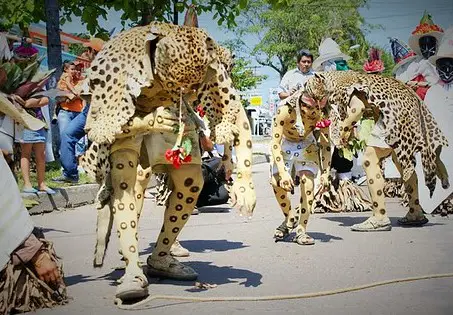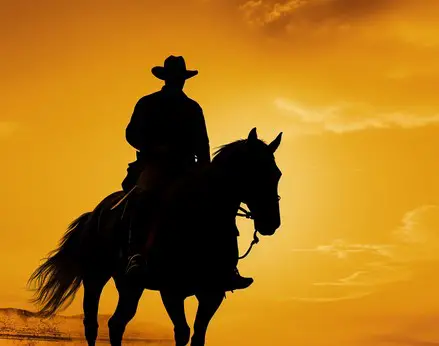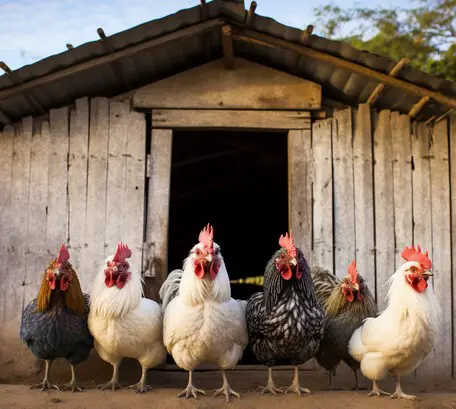Podcast: Play in new window | Download
Subscribe: Apple Podcasts | RSS
Nestled in the southeastern corner of Mexico, the state of Tabasco unfolds as a land rich in history and culture. Known as the “Eden of Mexico,” Tabasco boasts a lush landscape teeming with rivers, jungles, and archaeological treasures dating back to ancient civilizations. Its capital, Villahermosa, is a vibrant hub where modernity converges with the echoes of a storied past. As the birthplace of the ancient Olmec civilization, Tabasco has played a pivotal role in shaping Mexico’s cultural heritage. Amidst the emerald-green landscapes and historic ruins, a tapestry of myths and legends unfolds, carrying whispers of ancient deities, mystical creatures, and the enduring spirit of Tabasco’s people. Here are four captivating myths and legends that have left an indelible mark on the cultural fabric of this Mexican state.
- The Snake Woman of La Punta
The first legend takes place during Spanish colonial times. María Violeta lived with her mother Doña Beltrana in a house in the Plazuela de La Concepción, in the old neighborhood of La Punta in Tabasco’s capital city, Villahermosa. The girl was quite rebellious and had several boyfriends at once and would have gentlemen callers sometimes multiple times per day. Doña Beltrana was aware of Maria Violeta’s secret encounters with various men, and sometimes punished her with the lashes of a horsewhip when she returned after her nightly adventures. However, despite the lashings, the  girl continued to escape every night. Over time, María Violeta’s reputation caught up with her and fewer and fewer men wanted to go out with her. The rumors were so bad and the girl’s reputation so soiled that the matronly Doña Beltrana could no longer be seen in public without the ladies of Villahermosa gossiping about her or her daughter. One day at the market was so bad for poor Beltrana that she vowed to whip her daughter something terrible when she returned home. When the doña did make it home, she grabbed the whip and headed toward María Violeta. The girl was also in a state of upset because of the lack of gentlemen friends in her life, so she wasn’t about to stand for such corporal punishment from her mother. When Doña Beltrana raised the whip against her daughter, María Violeta grabbed the whip with the intention of beating her own mother. Suddenly, when she grabbed ahold of the whip, it turned into a gigantic snake. Both women were surprised when the newly transformed whip started attacking María Violeta in its snake form. At one point, the snake merged with the girl and María Violeta then turned completely into a gigantic serpent. With Doña Beltrana screaming in horror, the huge snake slithered out of the house and made it to the shores of the Grijalva River. Into the warm waters of the river, the horrible beast disappeared. Doña Beltrana was mute from terror for several months, and only on her deathbed, she narrated what happened to her daughter. Since then, the neighbors of the Barrio de La Punta have sighted a strange aquatic creature in the waters of the Grijalva River and have named this being “the snake woman.” This large slithering scaly snake is said to leave the Grijalva River to attack children who disrespect their parents, or who are ungrateful to them. The city of Villahermosa, at least a part of it, is said to have very well-behaved children because of the story of the degenerate María Violeta.
girl continued to escape every night. Over time, María Violeta’s reputation caught up with her and fewer and fewer men wanted to go out with her. The rumors were so bad and the girl’s reputation so soiled that the matronly Doña Beltrana could no longer be seen in public without the ladies of Villahermosa gossiping about her or her daughter. One day at the market was so bad for poor Beltrana that she vowed to whip her daughter something terrible when she returned home. When the doña did make it home, she grabbed the whip and headed toward María Violeta. The girl was also in a state of upset because of the lack of gentlemen friends in her life, so she wasn’t about to stand for such corporal punishment from her mother. When Doña Beltrana raised the whip against her daughter, María Violeta grabbed the whip with the intention of beating her own mother. Suddenly, when she grabbed ahold of the whip, it turned into a gigantic snake. Both women were surprised when the newly transformed whip started attacking María Violeta in its snake form. At one point, the snake merged with the girl and María Violeta then turned completely into a gigantic serpent. With Doña Beltrana screaming in horror, the huge snake slithered out of the house and made it to the shores of the Grijalva River. Into the warm waters of the river, the horrible beast disappeared. Doña Beltrana was mute from terror for several months, and only on her deathbed, she narrated what happened to her daughter. Since then, the neighbors of the Barrio de La Punta have sighted a strange aquatic creature in the waters of the Grijalva River and have named this being “the snake woman.” This large slithering scaly snake is said to leave the Grijalva River to attack children who disrespect their parents, or who are ungrateful to them. The city of Villahermosa, at least a part of it, is said to have very well-behaved children because of the story of the degenerate María Violeta.
- Unusual Elements of the Carnaval of Tenosique
Tenosique is a town in southeastern Tabasco about 15 miles north of Mexico’s border with Guatemala. It was first inhabited sometime around 1000 BC and has had people living there ever since, uninterrupted. In the local Maya dialect, the town comes from two words, tana, meaning “house,” and tsiic meaning “weaving.” So loosely interpreted the original name of the place meant “house of  the weavers.” The Carnaval at Tenosique dates to pre-Hispanic times and anthropologists believe that elements of it may even predate the Maya and might go into Olmec times. This local festival deserves mentioning in a show about legends because of the legendary characters and rituals found at this annual celebration. The Tenosique Carnaval starts around January 20th and lasts a few weeks. Very few outsiders attend, and it is not a celebration put on or marketed to encourage tourism. The festival begins with the Baile de la Harina, or “Dance of the flour” in which the townsfolk grab sacks of cornmeal and start throwing the flour at each other in the style of a food fight. Another important dance at the Tenosique festival is the Pochó Dance. Pochó is a local god that predates the Maya and researchers cannot determine how far back the belief in this god goes. In the festival the god has priestesses called Pochoveras or “maidens of the flowers” who are responsible for keeping a fire lit at Pochó’s altar during the entire duration of the Tenosique Carnaval. In addition, these women create and display a banner made from flower petals which is the symbol of the god Pochó. Also, during this festival, the people of the town create gigantic dummies made of corn husks and corn paste that resemble papier-mâché Judas dolls found in other parts of Mexico. These large corn-husk effigies are called cojóes and each cojó represents an offense committed against the god Pochó. Also important in the Tenosique Carnaval are the jaguar dancers. Esteemed villagers will paint themselves white and dot themselves with charcoal all while wearing jaguar masks and animal skins on their backs. The jaguars try to destroy the gigantic corn dolls but are symbolically prevented from doing so by the Pochovera priestesses. No one in the town knows why they do what they do during the Tenosique Carnaval, but some anthropologists theorize that this may be the oldest continuously celebrated event in all Mexico with origins going back possibly well beyond 3,000 years.
the weavers.” The Carnaval at Tenosique dates to pre-Hispanic times and anthropologists believe that elements of it may even predate the Maya and might go into Olmec times. This local festival deserves mentioning in a show about legends because of the legendary characters and rituals found at this annual celebration. The Tenosique Carnaval starts around January 20th and lasts a few weeks. Very few outsiders attend, and it is not a celebration put on or marketed to encourage tourism. The festival begins with the Baile de la Harina, or “Dance of the flour” in which the townsfolk grab sacks of cornmeal and start throwing the flour at each other in the style of a food fight. Another important dance at the Tenosique festival is the Pochó Dance. Pochó is a local god that predates the Maya and researchers cannot determine how far back the belief in this god goes. In the festival the god has priestesses called Pochoveras or “maidens of the flowers” who are responsible for keeping a fire lit at Pochó’s altar during the entire duration of the Tenosique Carnaval. In addition, these women create and display a banner made from flower petals which is the symbol of the god Pochó. Also, during this festival, the people of the town create gigantic dummies made of corn husks and corn paste that resemble papier-mâché Judas dolls found in other parts of Mexico. These large corn-husk effigies are called cojóes and each cojó represents an offense committed against the god Pochó. Also important in the Tenosique Carnaval are the jaguar dancers. Esteemed villagers will paint themselves white and dot themselves with charcoal all while wearing jaguar masks and animal skins on their backs. The jaguars try to destroy the gigantic corn dolls but are symbolically prevented from doing so by the Pochovera priestesses. No one in the town knows why they do what they do during the Tenosique Carnaval, but some anthropologists theorize that this may be the oldest continuously celebrated event in all Mexico with origins going back possibly well beyond 3,000 years.
- The Ghost Cowboy
 There was a cattle thief who once roamed the countryside of Tabasco and ruined the livelihoods of many cattle owners with his robberies. One struggling family who had fallen victim to this thief hunted him down. The teenage son of the cattleman took a spear and hurled it at the thief, striking him squarely and killing him instantly. Following the tragic event, the soul of the dead man began to travel through the cleared pasturelands and lonely back roads, taking on the appearance of a mysterious rider. Over time, the legend was mostly forgotten – almost no one remembered it – but the ghost rider continues to ride all the infrequently traveled roads throughout Tabasco, almost daily. Some nights he prowls the River Region; others, through the Chontalpa area or the Sierras; and most of the time, through the center of the state. Of those who have encountered this strange apparition – motorists, truck drivers or motorcyclists who travel at night – many have not lived to tell the tale. It is said that, suddenly, the rider crosses the road or path, causing the driver of the vehicle to brake. If the driver is drunk when he sees that rider, he lets out all kinds of expletives and curses, and the ghost cowboy stands in front of him with flashing eyes and laughing in a demonic way. So, in terror the traveler accelerates madly, ending his dizzying race against a tree or another vehicle, losing his life. No one has seen it happen, but it is assured that the ghost cowboy approaches the accident vehicle and carries the soul of the deceased on his shoulders. This is certainly a cautionary tale to avoid deserted roads at night, especially if driving intoxicated.
There was a cattle thief who once roamed the countryside of Tabasco and ruined the livelihoods of many cattle owners with his robberies. One struggling family who had fallen victim to this thief hunted him down. The teenage son of the cattleman took a spear and hurled it at the thief, striking him squarely and killing him instantly. Following the tragic event, the soul of the dead man began to travel through the cleared pasturelands and lonely back roads, taking on the appearance of a mysterious rider. Over time, the legend was mostly forgotten – almost no one remembered it – but the ghost rider continues to ride all the infrequently traveled roads throughout Tabasco, almost daily. Some nights he prowls the River Region; others, through the Chontalpa area or the Sierras; and most of the time, through the center of the state. Of those who have encountered this strange apparition – motorists, truck drivers or motorcyclists who travel at night – many have not lived to tell the tale. It is said that, suddenly, the rider crosses the road or path, causing the driver of the vehicle to brake. If the driver is drunk when he sees that rider, he lets out all kinds of expletives and curses, and the ghost cowboy stands in front of him with flashing eyes and laughing in a demonic way. So, in terror the traveler accelerates madly, ending his dizzying race against a tree or another vehicle, losing his life. No one has seen it happen, but it is assured that the ghost cowboy approaches the accident vehicle and carries the soul of the deceased on his shoulders. This is certainly a cautionary tale to avoid deserted roads at night, especially if driving intoxicated.
- The Goblins of Mazateupa
A long time ago outside the town of Mazateupa in a place called La Sabana at a small ranchito named El Guanal there lived a family who liked to raise backyard animals. They liked chickens most of all, since they had quite a few and sometimes managed to raise up to 50 or 70 chickens in addition to their turkeys, ducks and pigs. The people of Mazateupa would say that the El Guanal rancho was  a lonely place, because it was so remote and no one lived in that area except that family. Although living in primitive conditions at the edge of the wilderness, the family was not afraid of anything, because the lady always remained in prayer, she prayed to God and above all to the Virgin Mary. One day, suddenly without knowing why, the chickens began to walk strangely, they stumbled, and their necks twisted very badly, some fell and wanted to get up but couldn’t. They had that type of affliction almost every day from dawn until dusk, and when night fell all the chickens were fine, as if nothing was happening to them. Rumors began to spread around the town of Mazateupa that the chickens at that forlorn rancho were demon-possessed. The family was surprised and wondered why this was happening, since it was only the chickens, and that it didn’t happen to the other animals. They began to call the chickens “cachurecos,” which is a colloquial term for “crooked or twisted.” The family did not know what to do in the face of such a curse upon their little struggling homestead. Some family members didn’t even want to eat chicken because they knew what was happening to those animals. One day, the father of the family decided to call on an older indigenous man who served as a sort of medicine man or shaman of the town of Mazateupa to come see what was happening to them. When the shaman arrived, he knew exactly what was going on. The first thing the old man asked them for was pozol – or hominy – with cocoa, two small gourds and a pack of cigarettes. The shaman took them to the edge of one of the cow pastures and stood before the gigantic trees that were the beginning of an endless forest. At this spot he performed a ritual to appease the local spirits. After the shaman was finished,
a lonely place, because it was so remote and no one lived in that area except that family. Although living in primitive conditions at the edge of the wilderness, the family was not afraid of anything, because the lady always remained in prayer, she prayed to God and above all to the Virgin Mary. One day, suddenly without knowing why, the chickens began to walk strangely, they stumbled, and their necks twisted very badly, some fell and wanted to get up but couldn’t. They had that type of affliction almost every day from dawn until dusk, and when night fell all the chickens were fine, as if nothing was happening to them. Rumors began to spread around the town of Mazateupa that the chickens at that forlorn rancho were demon-possessed. The family was surprised and wondered why this was happening, since it was only the chickens, and that it didn’t happen to the other animals. They began to call the chickens “cachurecos,” which is a colloquial term for “crooked or twisted.” The family did not know what to do in the face of such a curse upon their little struggling homestead. Some family members didn’t even want to eat chicken because they knew what was happening to those animals. One day, the father of the family decided to call on an older indigenous man who served as a sort of medicine man or shaman of the town of Mazateupa to come see what was happening to them. When the shaman arrived, he knew exactly what was going on. The first thing the old man asked them for was pozol – or hominy – with cocoa, two small gourds and a pack of cigarettes. The shaman took them to the edge of one of the cow pastures and stood before the gigantic trees that were the beginning of an endless forest. At this spot he performed a ritual to appease the local spirits. After the shaman was finished,  the animals returned to normal. When he came back from the edge of the forest, the respected elder informed the family what was happening to their chickens: He told them that it was the goblins called aluxes who were doing evil to the animals. The goblins wanted the family to leave the place, since it was their territory, and the family never asked their permission to clear the land and start their little ranch there. The family didn’t want any more trouble from these creatures, so after a while they had to leave their homestead and settle in the town. Since then and until now, no one lives at the Rancho el Guanal. Only cattle graze there.
the animals returned to normal. When he came back from the edge of the forest, the respected elder informed the family what was happening to their chickens: He told them that it was the goblins called aluxes who were doing evil to the animals. The goblins wanted the family to leave the place, since it was their territory, and the family never asked their permission to clear the land and start their little ranch there. The family didn’t want any more trouble from these creatures, so after a while they had to leave their homestead and settle in the town. Since then and until now, no one lives at the Rancho el Guanal. Only cattle graze there.
REFERENCES
Gracias a Paratodomexico.com for the legends
